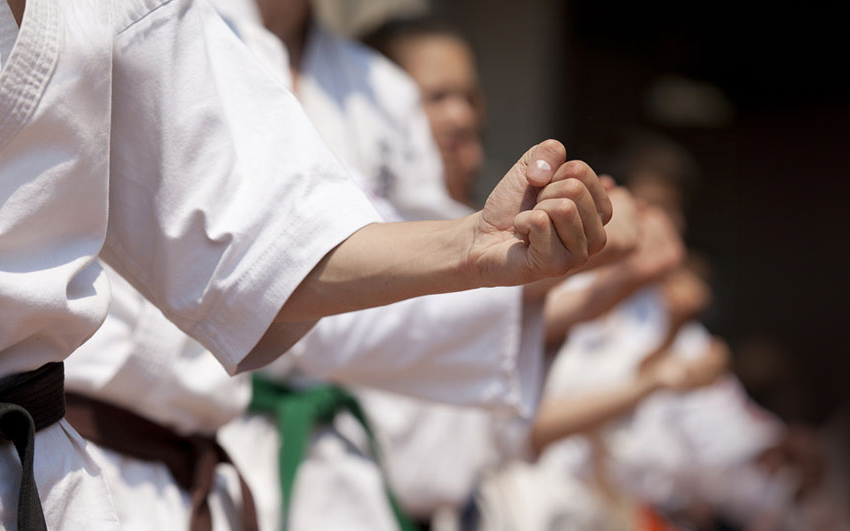What Are the various Karate Styles?
A complete list of Karate styles and their lineage.
Originating from China and developed in Okinawa, Karate styles are as varied as they are numerous. From the ancient Shuri-Te and Naha-Te to the more recent styles like Shito-Ryu, Goju-Ryu, Wado-Ryu, and Shotokan, Karate spawned dozens and dozens of styles, each with their own technical repertoire and philosophy.
Whatever your style is, take you Karate to the next level with my favorite Karate equipment for training at home.
The vast amount of Karate styles reported today can be classified into original styles, major derived styles, minor derived styles, full-contact styles, and hybrid styles. Discover through this list, the richness, and the diversity that Karate has to offer.
What Are The Original Karate Styles?
Little is known about the exact origins of Karate before it appeared in the Ryukyu Kingdom — present-day Okinawa, Japan. The art of Karate is said to find its origin in China, more precisely in Shaolin temple, where it was developed and practiced as a martial know as Kung-Fu.
Centuries later, the art traveled to Ryukyu islands where it was developed under the name of Te (手) (meaning hand in Ryukyuan language). Te was once again influenced by Chinese Kung Fu, as trade relationships between China and the Ryukyu were established thirty-six families from Chinese Province of Fujian settled on Ryukyu islands. Te became globally known as Tode or Tang Hands, in honor of the Chinese Tang Dynasty.
By the 18th century, the art of Te had developed in three different villages – Shuri, Naha, and Tomari, resulting in the creating of Shuri-te, Naha-te, and Tomari-te, the three major historical branches of Te, that will be later known as Karate.
Shuri-Te
Shuri-te, literally “Shuri Hand”, is a karate style that has developed on the Okinawa Archipelago in Shuri City. It was especially the local “nobility” who practiced Shuri-te at the royal palace in Shuri. Shuri-Te was an external, long and dynamic style, using many kicking techniques. This style, Shuri-te gave birth to Shorin-Ryu and is also at the base of Shotokan, Wado-Ryu.
Naha-Te
Naha-Te, literally “Naha hand” is one of the original styles that developed around the port town of Naha, the modern-day capital of Okinawa. Naha-te was based mostly on Southern China’s Fujian White Crane Kung-Fu. Naha-Te was a short distance, almost static style. It was using very few leg techniques and less rarely used kick above the solar plexus. It puts a lot of emphasis on breathing techniques. Naha-Te gave birth to two styles: Goju-Ryu and Uechi-Ryu.
Tomari-Te
Less know that his two brothers, Tomari-Te, literally “Tomari Hand”, is a style originating from the village of Tomari, Okinawa. Tomari-Te seems to have been a mixture of both internal and external aspects of Shuri-Te and Naha-Te. Even though it was a mix between Shuri-Te and Naha-Te, Tomari-Te remained closer to Shuri-Te.
From Tode to Karate
In 1879, the Ryukyu Kingdom was annexed to Japan and became Okinawa, one of the many Japanese Prefecture.
Around 1935, with the intention of making their art more “Japanese”, the Japanese character “Tang” of Tode (唐手) was replaced by “empty” becoming empty hands (空手) or Karate.
What Are The Four Major Styles Of Karate?
Today there are four main styles of Karate in Japan: Shito-Ryu, Goju-Ryu, Wado-Ryu, and Shotokan.
These traditional karate styles are direct descendants of ancient Ryukyu Te or Tode.
Shito-Ryu (Japan)
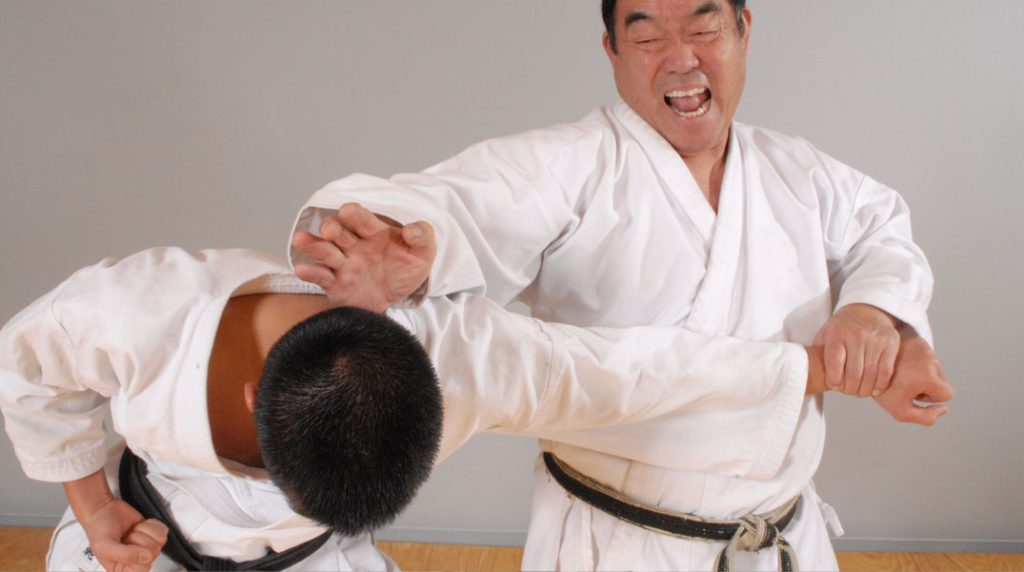
Shito-Ryu was created by Kenwa Mabuni in 1928 and put a lot of emphasis on the practice of kata. Mabuni named his style “Shito-Ryu” based on the first kanji character from the names of his two primary teachers. Shito-Ryu blends features of both hard and soft, internal and external martial arts.
Origin: Shuri-Te, Naha-Te > Shito-Ryu
Goju-Ryu (Okinawa)
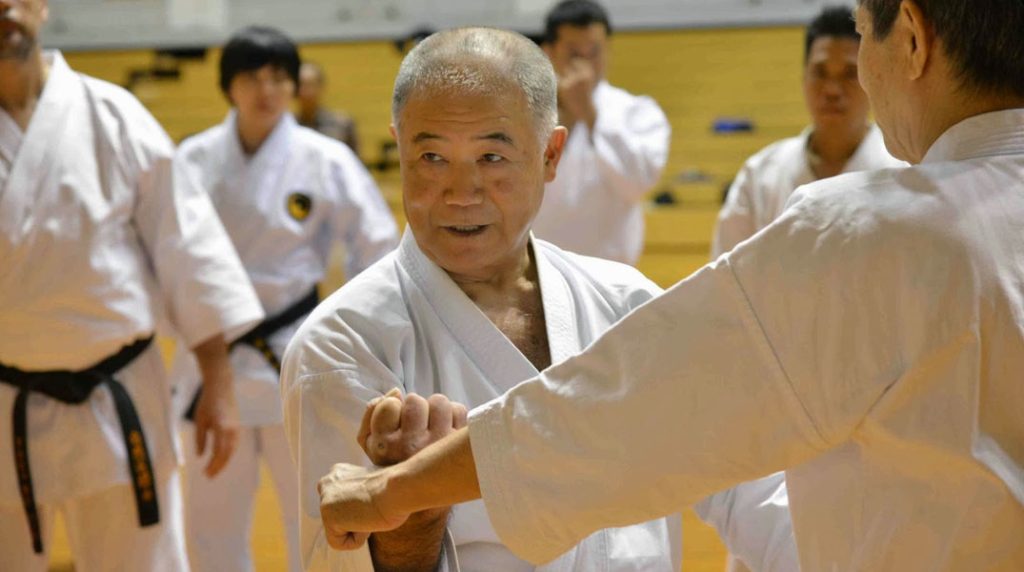
Goju-Ryu was founded by Chojun Miyagi in 1930 and is strongly influenced by from Chinese internal martial arts. Goju-Ryu implements soft circular blocking techniques, similar in nature to jujitsu techniques, in combination with powerful counter-strike combinations.
Origin: Naha-Te > Goju-Ryu
Wado-Ryu (Japan)
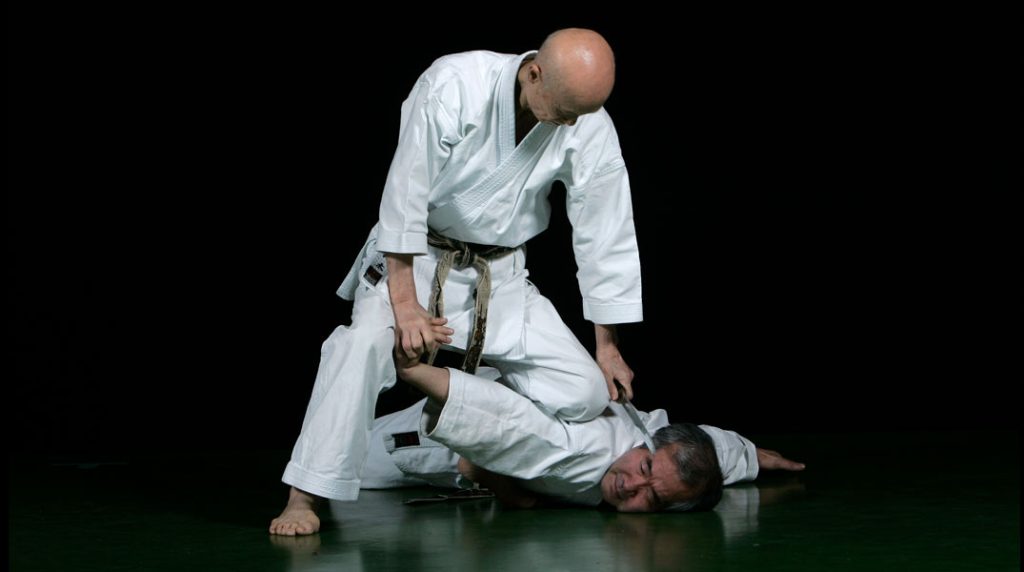
Wado-Ryu was created by Hironori Otsuka is 1939 and is strongly influenced by classical jujitsu’s technical repertoire. It focuses on Taisabaki (dodging) to avoid or minimize an opponent’s attack. It also has natural stances and is more fluid, than other styles of Karate.
Origin: Shuri-Te > Shotokan > Shindō Yōshin-ryū > Wado-Ryu
Shotokan (Japan)
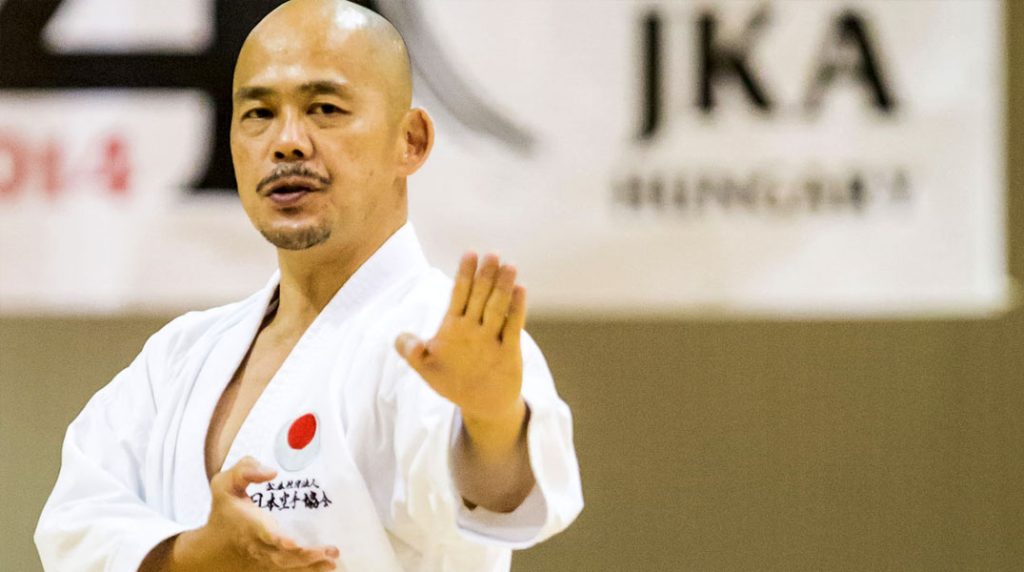
Shotokan was created in Tokyo in 1938 by Gichin Funakoshi, considered by many to be modern karate’s founding master. Shotokan is the most popular Karate style taught around the world. This style of karate makes use of linear techniques and wide stances, designed to deliver powerful strikes quickly.
Origin: Shuri-Te > Shotokan
What Are The Major Derived Karate Styles?
The Karate styles I have included into this list are major offsprings of the traditional four major styles. These are the most famous and popular “third generation” descendants of Karate. Discover the list of the major derived schools.
Uechi-Ryu (Okinawa)
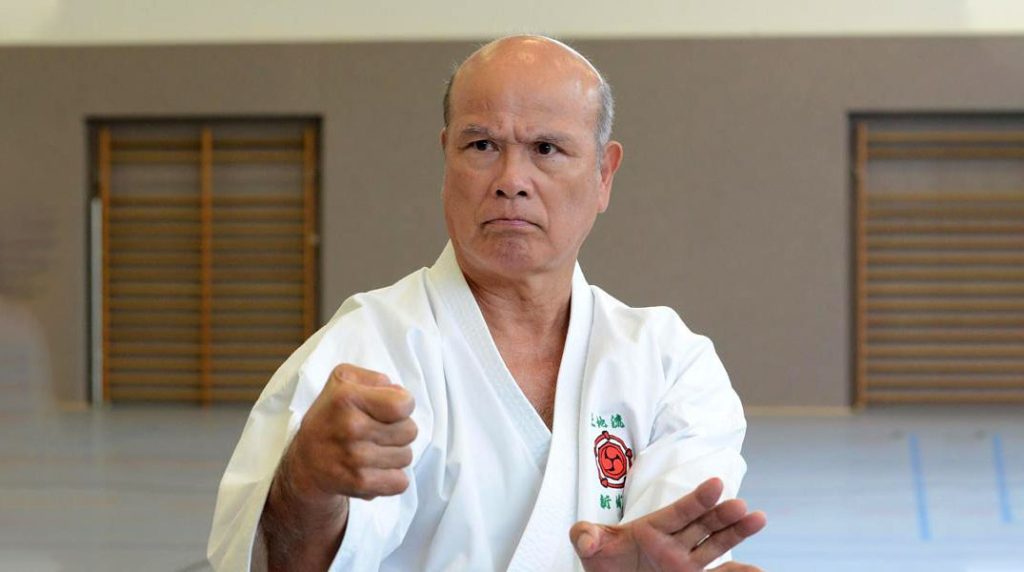
Uechi Ryu is a traditional Okinawan style of karate developed by Kanbun Uechi in the early 1900s, following Kanbun’s training for many years in China. Some of Uechi-Ryu’s characteristic includes forearm conditioning and unique methods of attacking which includes finger-tip and toe-tip strikes and kicks.
Origin: Naha-Te > Uechi-Ryu
Shorin-Ryu (Okinawa)
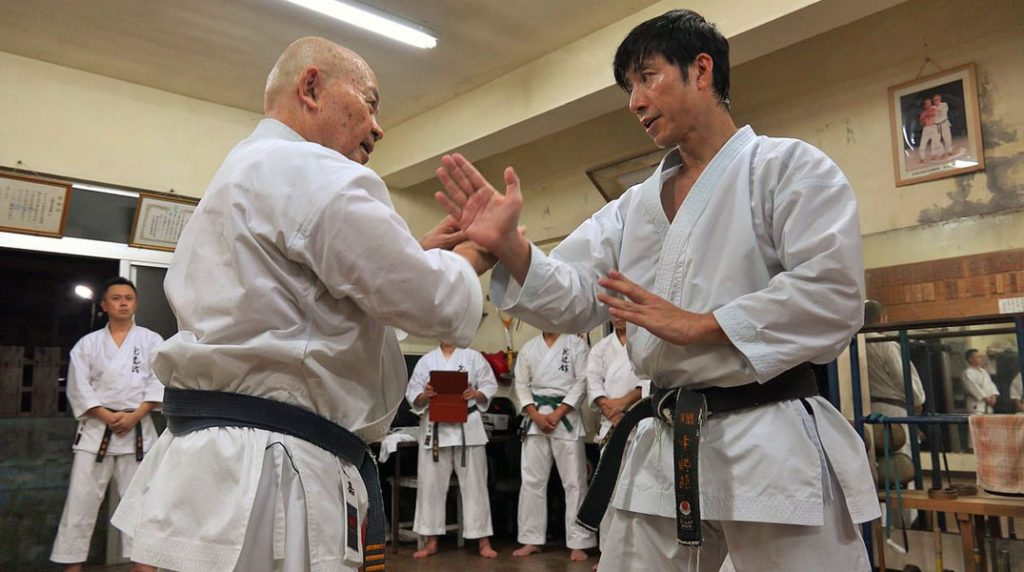
Shorin-Ryu was founded in 1933 by Chosin Chibana in Okinawa. “Shorin” is the Okinawan pronunciation of Shaolin, honoring the style’s ancient Chinese origin. Shorin-Ryu is characterized by its long, natural and relaxed movements, as well as for its speed and agility.
Origin: Shuri-Te > Shorin-Ryu
Chito-Ryu (Japan)
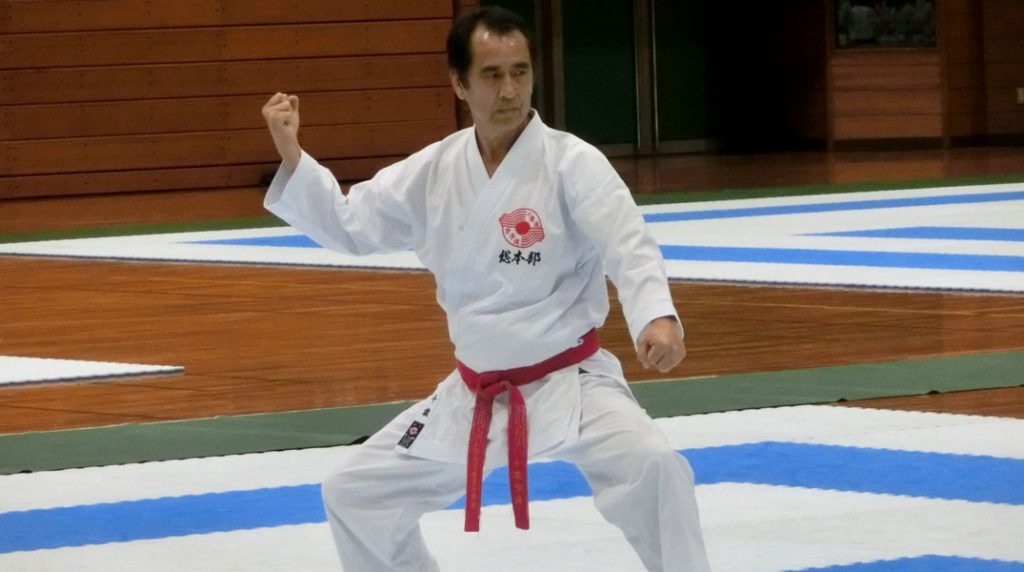
Chito-Ryu is one of the main traditional styles of Karate. It was founded in 1946 by Dr. Tsuyoshi Chitose. This Japanese martial art focuses on good manners, self-discipline, fitness, and self-defense. Chito-Ryu employs shibori, quick twisting of the hip muscles, to generate powerful strikes.
Origin: Shuri-Te > Shorin-Ryu > Chito-Ryu
Isshin Ryu (Okinawa)
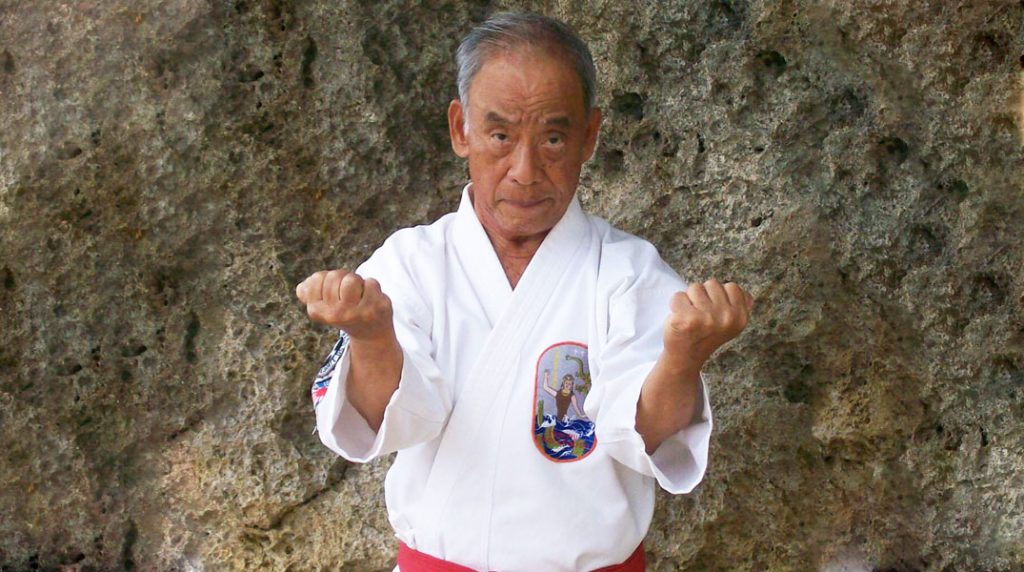
Isshin-Ryu was created in 1957 by Tatsuo Shimabuku and has its origin in Goju-Ryu and Shorin-Ryu. Isshin-Ryu focuses on punches, kicks, kobudo (traditional weapons training), kumite and kata. Isshin-Ryu is also known for its vertical punches (versus horizontal punches on most karate styles).
Origin: Shuri-Te, Naha-Te > Shorin-Ryu, Goju-Ryu > Isshin-Ryu
What Are The Minor Derived Karate Styles?
You will find here a list of minor styles derived from of the four classical Karate schools. Most styles included in this list are lesser known, even in the Karate community or are known by people with historical knowledge of Karate. Here is the list of the minor derived styles.
Shorinji-Ryu (Okinawa)
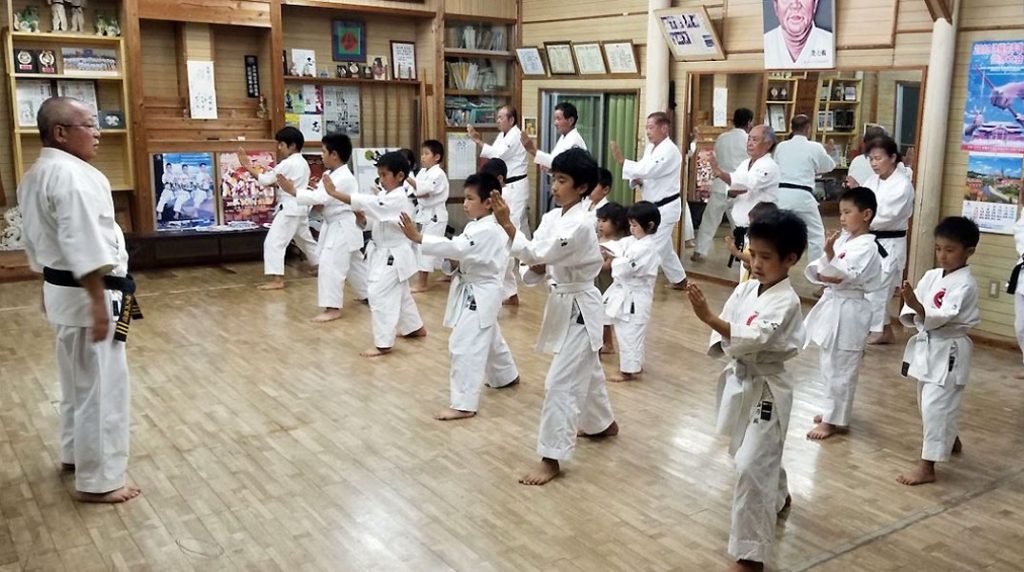
Shorinji-Ryu is one of the oldest styles of Okinawan Karate and was created by Kanga Sakugawa — a student of the legendary Matsumura Sokon — in 1762. The word “Shorinji” refers to the Shaolin Temple located in China. There are several variants of Shorinji-Ryu, the major ones are Kenkokan and Renshinkan.
Origin: Shuri-Te > Shorinji-Ryu
Matsubayashi-Ryu (Okinawa)
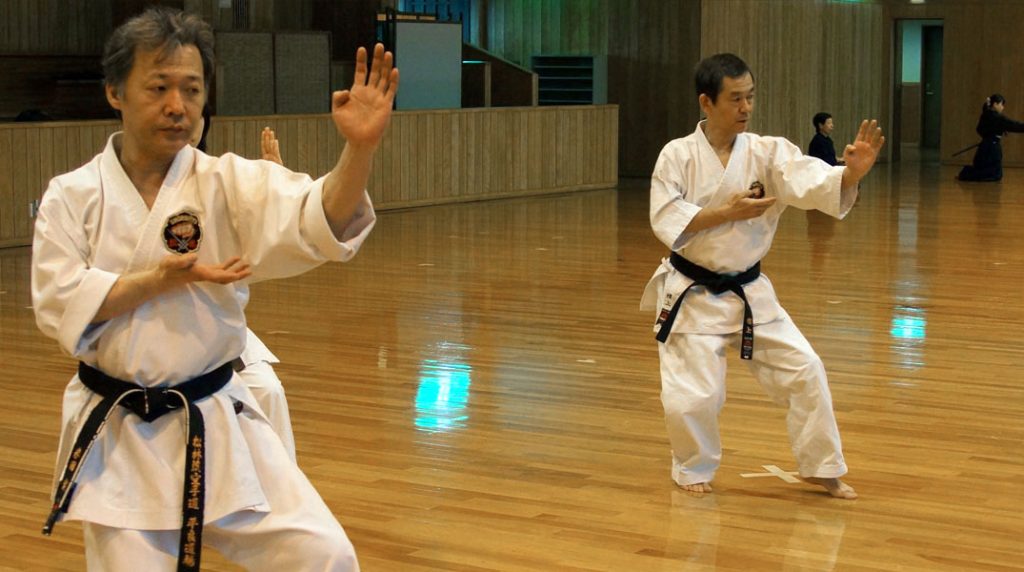
Matsubayashi-Ryu is a style of Karate founded in Okinawa in 1947, by Shoshin Nagamine. Shorin-Ryu is quick and fast in its movements. It uses the bodies natural ability to execute movements and uses the Natural Stance as the most common stance.
Origin: Shuri-Te > Shorin-Ryu > Matsubayashi-Ryu
Motobu-Ryu (Okinawa)
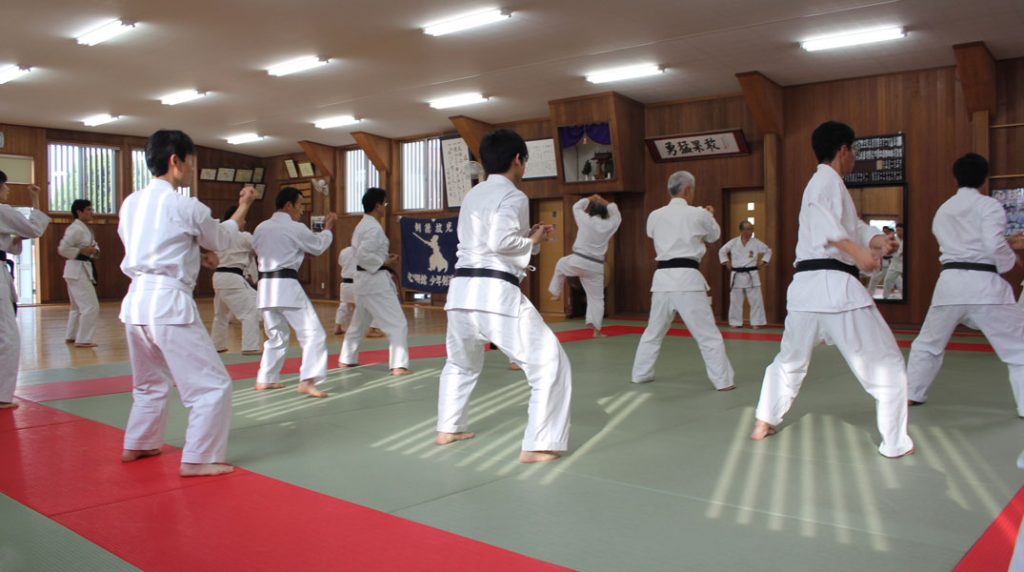
Motobu-Ryu is a family Karate style of karate founded in 1922 by Choki Motobu. This particular Karate style focusses on evading attacks, and counter with simultaneous offensive and defensive actions. Since Motobu-Ryu had no kata originally, training is centered on sparring called sōtai-dōsa.
Origin: Shuri-Te, Tomari-Te > Motobu-Ryu
Ryuei-Ryu (Okinawa)
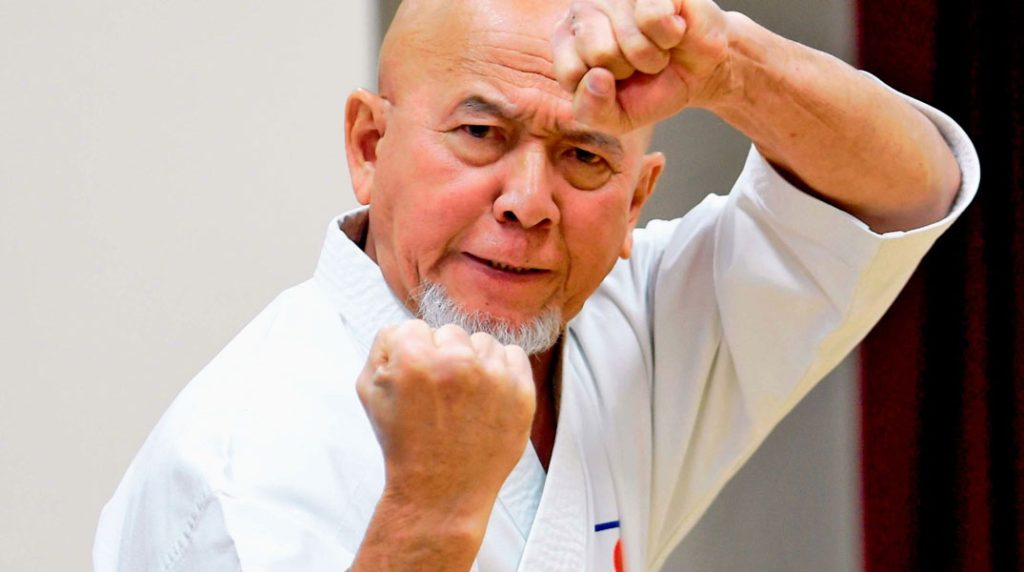
Ryuei-Ryu was originally the family style of the Nakaima family of Naha and was founded by Norisato Nakaima, in 1845. Norisato learned White Crane Kung-Fu in China under Master Xie Zhongxiang. The strong Chinese influence is particularly evident with this style. Ryuei-Ryu was made famous by Tsuguo Sakumoto and his impressive demonstration of Anan kata.
Origin: Naha-Te > Ryuei-Ryu
Shukokai (Japan)
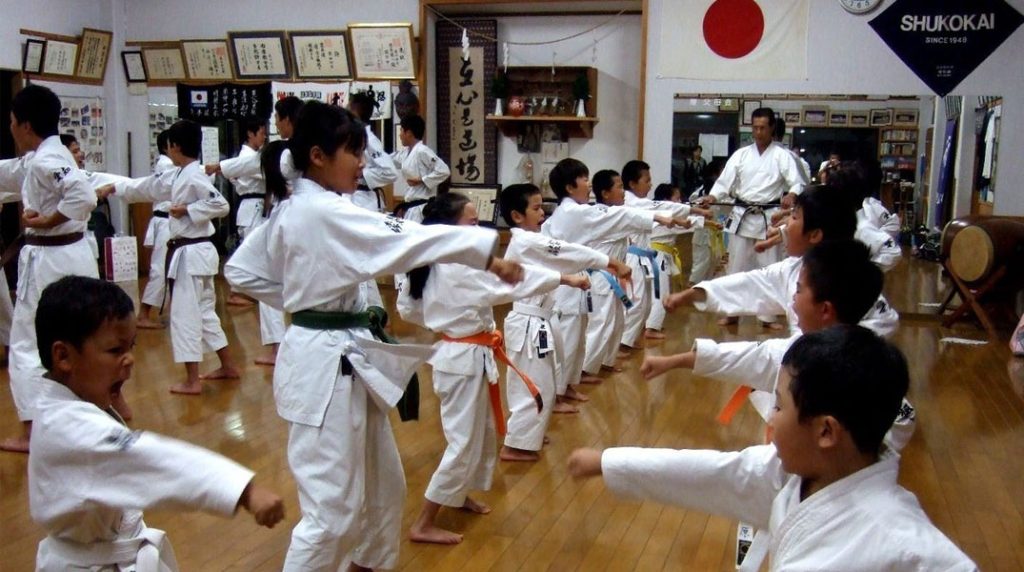
Shukokai is a Karate style developed in the late 1940s by Chōjirō Tani. Heavily influenced by Shito-Ryu, Shukokai was designed around the study of body mechanics. High natural stances, fast foot-work and mobility, and shibori “hip twist” are Shukokai’s main characteristics.
Origin: Shuri-Te > Shito-Ryu > Shukokai
Shudokan (Okinawa)
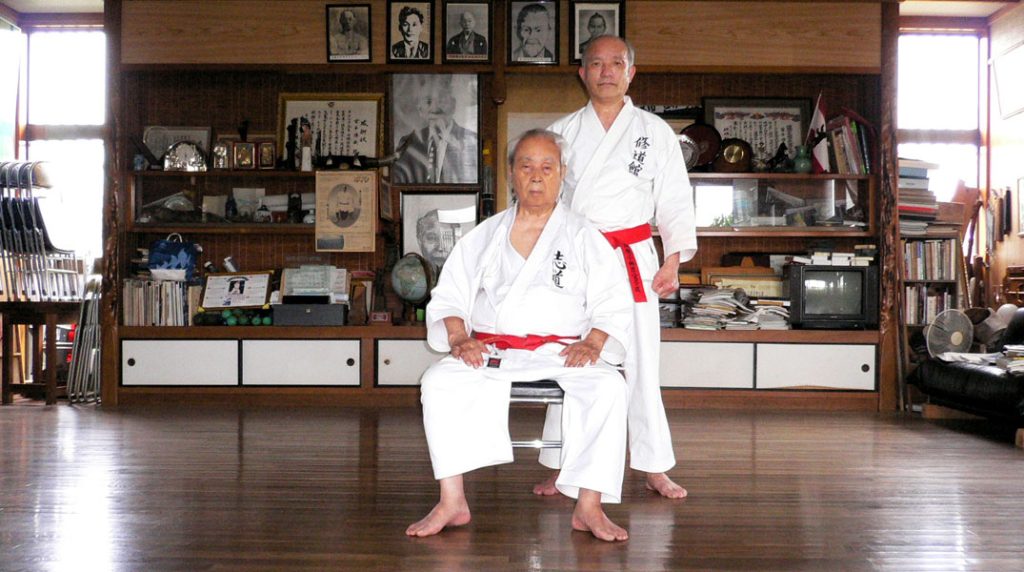
Shudokan is a Japanese style of Okinawan Karate developed by Kanken Toyama in 1930. Toyama studied under master Anko Itosu and Kanryō Higaonna. He also studied Kung-Fu in China. Today, Shudokan has developed into a school composed of two systems: Kobudo and Shorin-Ryu.
Origin: Shuri-Te, Naha-Te, Tomari-Te > Shudokan
Shindo Jinen-Ryu (Japan)
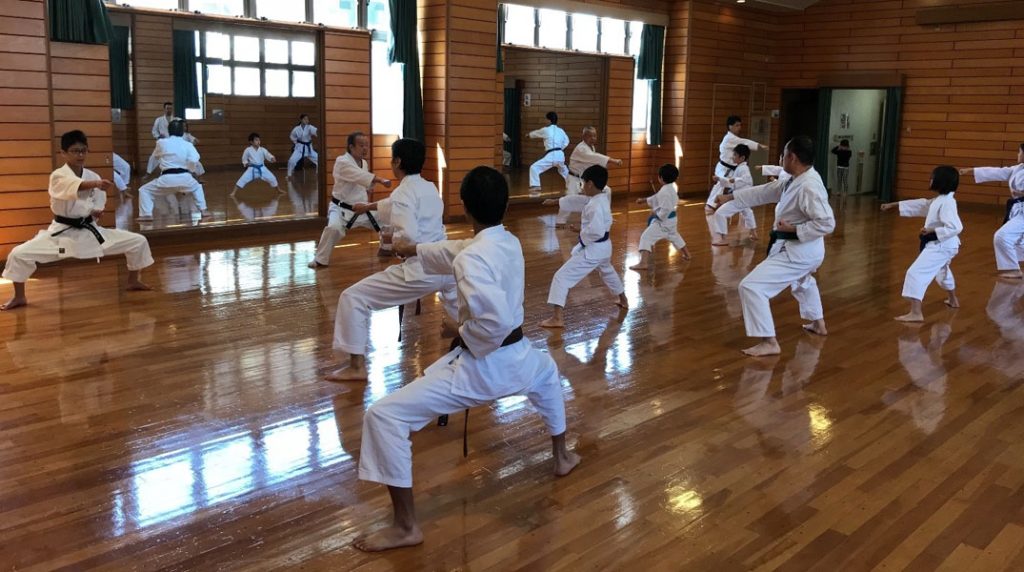
Shindo Jinen-Ryu is a form of Karate that was created by Yasuhiro Konishi in 1933. It incorporates in its curriculum elements of karate, jujutsu, and kendo. Shindo Jinen-Ryu emphasizes both philosophy and education. This school as a strong focus on practicality and often uses entering strikes with finishing takedowns.
Origin: Shuri-Te, Naha-Te > Shotokan, Shito-Ryu, Goju-Ryu, Muso-Ryu Jujutsu, Takenouchi-Ryu Jujutsu > Shindo Jinen-Ryu
What Are The Full-contact Karate Styles?
The founder of Kyokushin Karate, Masutatsu Oyama, organized in 1969 the first ‘All-Japan Full Contact Karate Open Championships’.
Full-contact Karate or “Knockdown Karate” advocates full-force sparring where the is determined either by points or knockout.
No protectors or guards are used in Full-contact Karate bouts, with the exception of mouthpieces, groin guards (men) and breast protectors (women).
Today, full contact karate competition comes in several different formats depending on styles and organizations.
Here is a list of the most popular Full-contact Karate styles.
Kyokushin Kai (Japan)
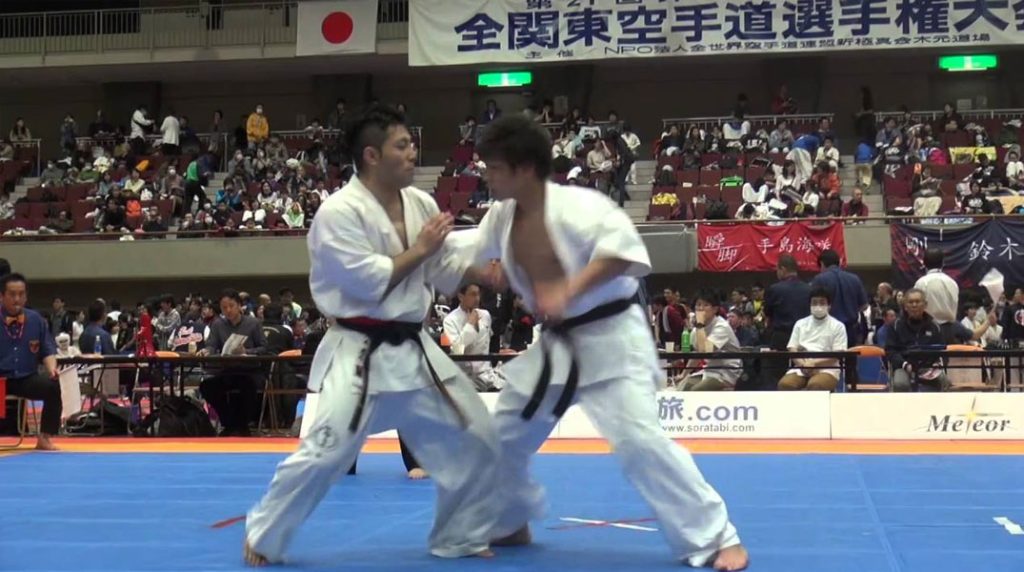
Kyokushin Kai is the first full-contact karate style. Its founder, Masutatsu Oyama, believed that the only way to test your skills was to participate in full-contact fighting, and not point fighting. Kyokushin Kai puts emphasis is on devastating blows and powerful single strikes. This style of Karate is very hard, and promote self-discipline and mental toughness.
Origin: Shuri-Te, Naha-Te > Shotokan, Goju-Ryu > Kyokushin
Kyokushin Kan (Japan)
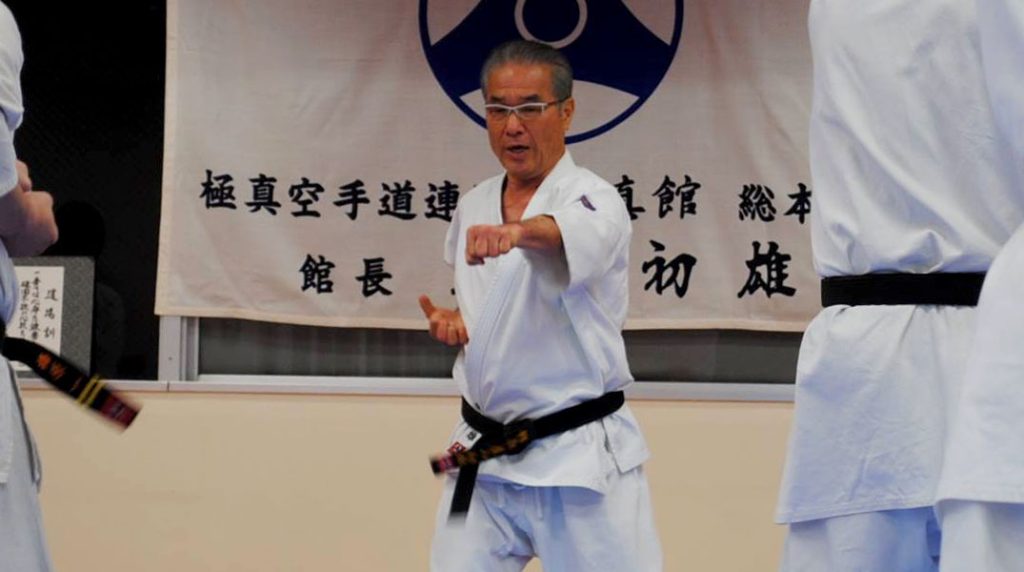
After the death of Oyama in 1994, conflicts led the Kyokushin Organization to split into different factions. Hatsuo Royama, one of Mas Oyama’s early students, left and created a new organization called Kyokushin-Kan. Its mission is to bring bunkai, ki training, punch-to-face tournaments, and weapon training back in Kyokushin.
Origin: Shuri-Te, Naha-Te > Shotokan, Goju-Ryu > Kyokushin > Kyokushin Kan
Ashihara Karate (Japan)
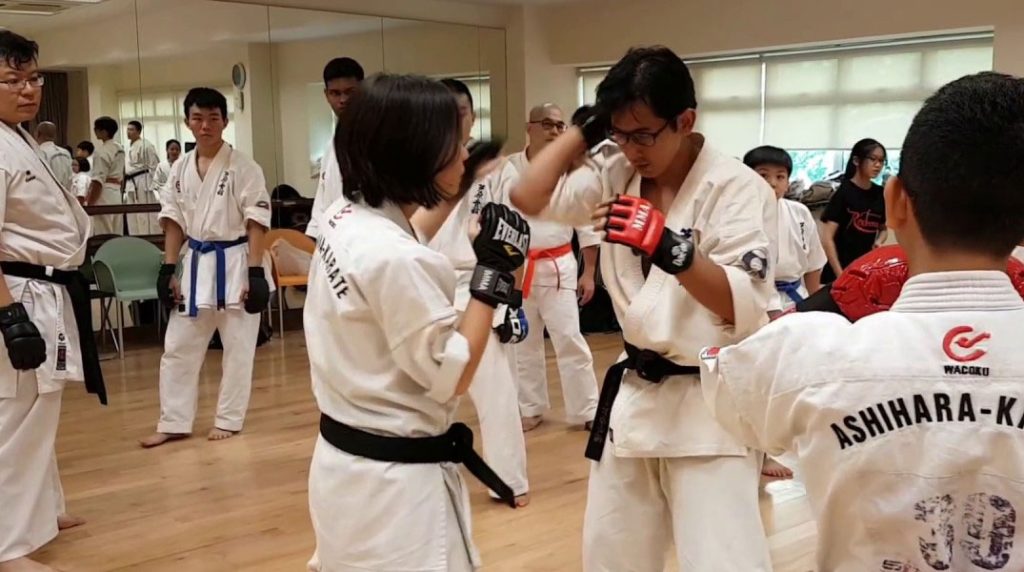
Ashihara Karate is an offspring of Kyokushin and was created in 1975 by Hideyuki Ashihara. It’s based around Sabaki, a method of stepping out of the line of an attack, into a “blind-spot” position, ideal for a counterattack. Ashihara Karate is preventing head to head forces to collide.
Origin: Shuri-Te, Naha-Te > Shotokan, Goju-Ryu > Kyokushin > Ashihara Karate
Enshin Karate (Japan)
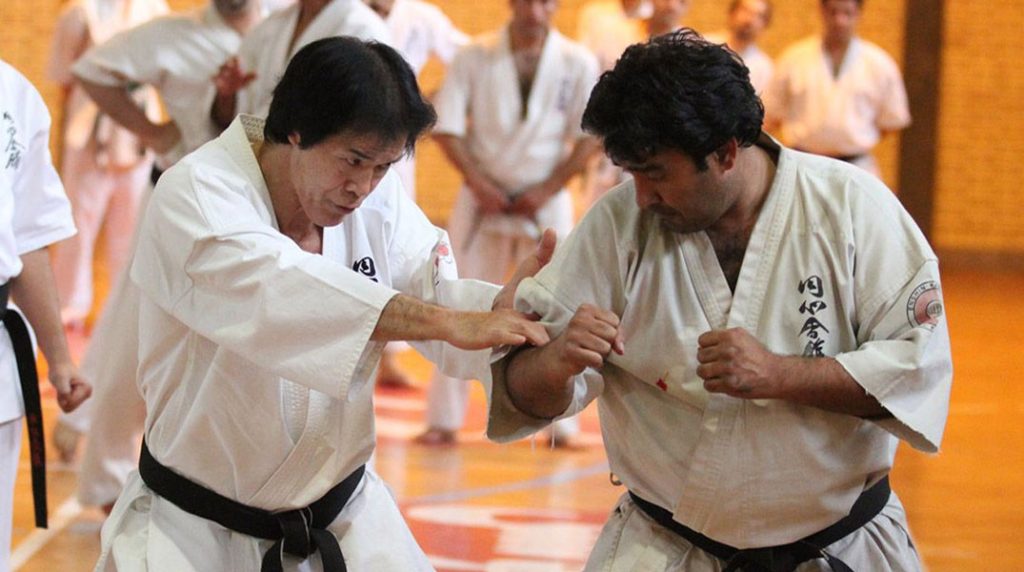
Enshin is a style of “full contact karate” established in 1988 by Joko Ninomiya. Ninomiya was the protégé of Hideyuki Ashihara and, one day left Ashihara Karate to start his own style in America. Ninomiya popularized even further the Sabaki principles.
Origin: Shuri-Te, Naha-Te > Shotokan, Goju-Ryu > Kyokushin > Ashihara Karate > Enshin Karate
Seido Kaikan Karate (Japan)

Seido Kaikan is a full contact karate style derived from Kyokushin by Kazuyoshi Ishii in 1981. In 1993, Ishii founded the K-1 organization, a kickboxing organization, closely cooperating with, but independent from Seidokaikan. K-1 grew up to be, and still is today, the top kickboxing organization in the world.
Origin: Shuri-Te, Naha-Te > Shotokan, Goju-Ryu > Kyokushin > Seido Kaikan
Byakuren Kaikan (Japan)
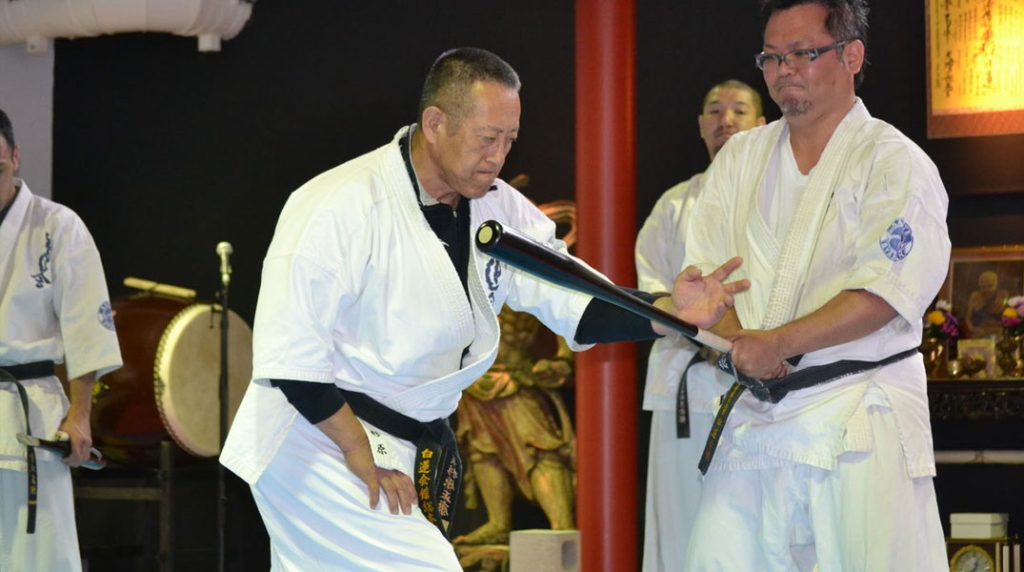
Byakuren Karate is a full contact style established by Sugihara Masayasu in 1984. Byakuren’s techniques are divided into two main categories: ‘Goho’ which focusses striking, blocking and dodging techniques and ‘Juho’ which concentrates on throwing, joint locking, and submission techniques.
Origin: Shuri-Te, Naha-Te > Shotokan, Goju-Ryu > Kyokushin > Byakuren Kaikan
What Are The Hybrid Karate Styles?
Hybrid Karate is a category of Karate styles that incorporates techniques from other styles into their practice.
Strongly influenced by early no hold barred, vale tudo and MMA tournaments, these styles are not only using striking but also grappling techniques as well.
Here is a list of the most popular hybrid Karate styles:
Kudo (Japan)
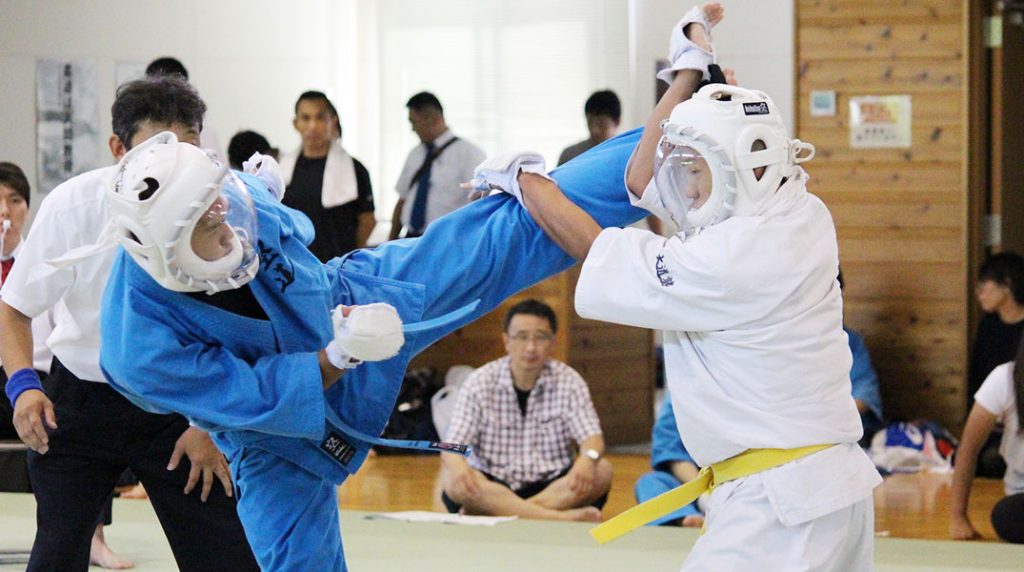
Kudo is a Japanese hybrid Karate style founded in 1981 by Kyokushin practitioner Takashi Azuma. Kudo calls itself “a mixed Budo sport” including full contact punches, kicks, throwings, and submission techniques on the ground. Combats are fought using a full face mask head guard and open finger padded gloves.
Origin: Shuri-Te, Naha-Te > Shotokan, Goju-Ryu > Kyokushin, Judo, Jujutsu, Muay Thai, Boxing > Kudo
Shidokan (Japan)
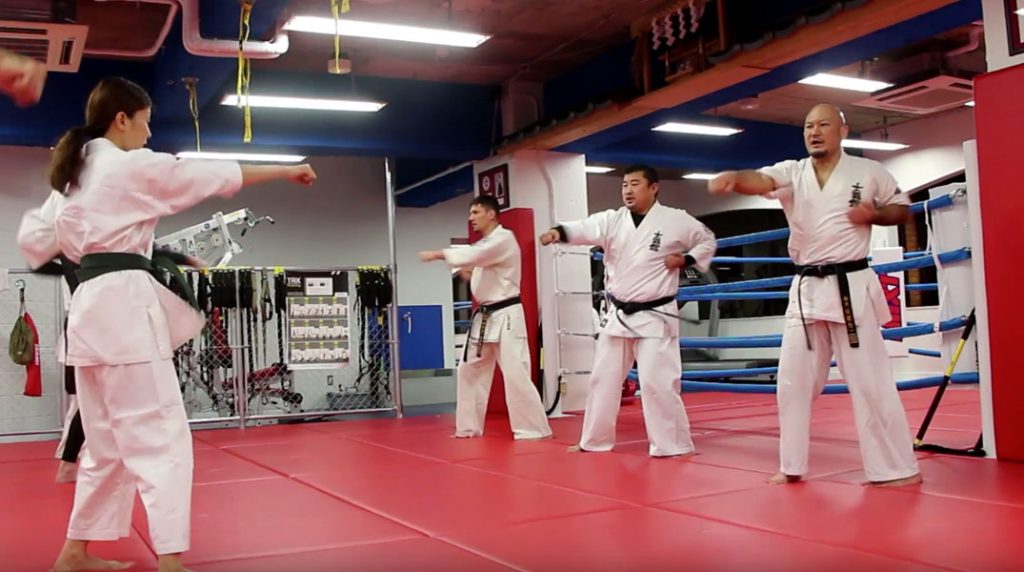
Created by Kyokushin practitioner Yoshiji Soeno in 1980, Shidokan Karate is a combination of Kyokushin Karate, Muay Thai, and grappling. Shidokan Karate has a triathlon tournament format where they fight several rounds with changing rules. First-round Kyokushin rules, second round Muay Thai rules and last round MMA rules.
Origin: Shuri-Te, Naha-Te > Shotokan, Goju-Ryu > Kyokushin, Judo, Jujutsu, Muay Thai, Boxing > Shidokan
Nippon Kempo or Nihon Kempo (Japan)
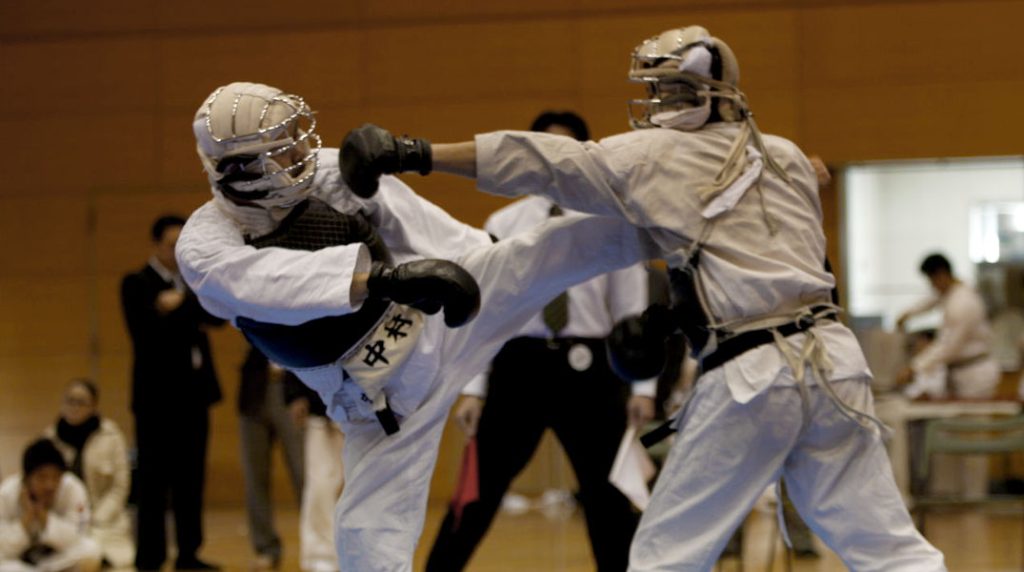
Developed in 1932 by Muneomi Sawayama, this type of Karate places uses striking, immobilization and controls, projections and take-downs. Bouts are fought full-contact or semi-contact and participants wear specially developed protective gear (bogu kumite) consisting of a steel cage mask, chest protector and padded gloves.
Origin: Shuri-Te, Naha-Te > Shotokan, Goju-Ryu, Kyokushin, Judo, Jujutsu, Muay Thai, Boxing > Shidokan
Summary Table
| STYLE | FOUNDER | CREATION | LINEAGE |
|---|---|---|---|
| Shito-Ryu | Kenwa Mabuni | Japan, 1928 | Shuri-Te, Naha-Te Shotokan, Goju-Ryu Kyokushin Judo, Jujutsu, Muay Thai, Boxing Shidokan |
| Goju-Ryu | Chojun Miyagi | Japan, 1930 | Naha-Te > Goju-Ryu |
| Wado-Ryu | Hironori Otsuka | Japan, 1939 | Shuri-Te > Shotokan, Shindō Yōshin-ryū > Wado-Ryu |
| Shotokan | Gichin Funakoshi | Japan, 1938 | Shuri-Te > Shotokan |
| Uechi-Ryu | Kanbun Uechi | Okinawa, early 1900’s | Naha-Te > Uechi-Ryu |
| Shorin-Ryu | Chosin Chibana | Okinawa, 1933 | Shuri-Te > Shorin-Ryu |
| Chito-Ryu | Tsuyoshi Chitose | Japan, 1946 | Shuri-Te > Shorin-Ryu > Chito-Ryu |
| Isshin-Ryu | Tatsuo Shimabuku | Okinawa, 1957 | Shuri-Te, Naha-Te > Shorin-Ryu, Goju-Ryu > Isshin-Ryu |
| Shorinji-Ryu | Matsumura Sokon | Ryukyu Kingdom, 1762 | Shuri-Te > Shorinji-Ryu |
| Matsubayashi-Ryu | Shoshin Nagamine | Okinawa, 1947 | Shuri-Te > Shorin-Ryu > Matsubayashi-Ryu |
| Motobu-Ryu | Choki Motobu | Okinawa, 1922 | Shuri-Te, Tomari-Te > Motobu-Ryu |
| Ryuei-Ryu | Norisato Nakaima | Okinawa, 1845 | Naha-Te > Ryuei-Ryu |
| Shukokai | Chōjirō Tani | Japan, 1940 | Shuri-Te > Shito-Ryu > Shukokai |
| Shudokan | Kanken Toyama | Okinawa, 1930 | Shuri-Te, Naha-Te, Tomari-Te > Shudokan |
| Shindo Jinen-Ryu | Yasuhiro Konishi | Japan, 1933 | Shuri-Te, Naha-Te > Shotokan, Shito-Ryu, Goju-Ryu, Muso-Ryu Jujutsu, Takenouchi-Ryu Jujutsu > Shindo Jinen-Ryu |
| Kyokushin | Masutatsu Oyama | Japan, 1964 | Shuri-Te, Naha-Te > Shotokan, Goju-Ryu > Kyokushin |
| Kyokushin Kan | Hatsuo Royama | Japan, 1994 | Shuri-Te, Naha-Te > Shotokan, Goju-Ryu > Kyokushin > Kyokushin Kan |
| Ashihara | Hideyuki Ashihara | Japan, 1975 | Shuri-Te, Naha-Te > Shotokan, Goju-Ryu > Kyokushin > Ashihara |
| Enshin | Joko Ninomiya | Japan, 1988 | Shuri-Te, Naha-Te > Shotokan, Goju-Ryu > Kyokushin > Ashihara > Enshin |
| Seido Kaikan | Kazuyoshi Ishii | Japan, 1981 | Shuri-Te, Naha-Te > Shotokan, Goju-Ryu > Kyokushin > Seido Kaikan |
| Byakuren | Sugihara Masayasu | Japan, 1984 | Shuri-Te, Naha-Te > Shotokan, Goju-Ryu > Kyokushin > Byakuren Kaikan |
| Kudo | Takashi Azuma | Japan, 1981 | Shuri-Te, Naha-Te > Shotokan, Goju-Ryu > Kyokushin > Judo, Jujutsu, Muay Thai, Boxing > Kudo |
| Shidokan | Yoshiji Soeno | Japan, 1980 | Shuri-Te, Naha-Te > Shotokan, Goju-Ryu > Kyokushin > Judo, Jujutsu, Muay Thai, Boxing > Shidokan |
| Nippon Kempo | Muneomi Sawayama | Japan, 1932 | Shuri-Te, Naha-Te > Shotokan, Goju-Ryu > Kyokushin > Judo, Jujutsu, Muay Thai, Boxing > Shidokan |
Conclusion
As you can see after reading the article, many Karate styles or branches have emerged over time from the “Original Four”.
If you count every small, independent school, there can be several hundreds of styles of Karate around the globe!
Each new Karate style was created by a master for various reasons.
Each founder has their own morphology, personality, and vision of efficiency. Each had their own philosophy and teaching that they wanted to transmit to the following generation.
Personally, I don’t adhere to a particular style as I try to go beyond systems as well as schools. I study and practice Karate as a whole, not as fragments.
Whether it’s one style or the other, ultimately, they all share the same goal — the perfection of the character of its participants.
What’s YOUR favorite style?
- 10 Ways Meditation can Improve Your Karate - March 6, 2024
- Is Tai Chi Effective for Self-Defense? - February 16, 2024
- Do You Need to Add Ground Grappling Into Your Karate? - February 15, 2024

